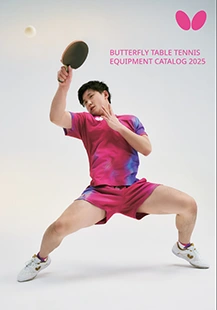Blocking
by Han Xiao
Blocking is a very underrated and undervalued skill in table tennis. One of my biggest regrets is not having more practice partners as a young player and not practicing blocking more. As a result, I had a poor understanding of blocking technique that took a long time to correct. It’s important to understand the basics of blocking and to practice against players of a similar level.
There are many different types of blocking. You might have seen professional players, for example, employ the chop block on occasion. Jan-Ove Waldner, Kong Linghui, and Ma Long are masters of this particular shot. However, today we’ll focus on more conventional blocking techniques.
To give us a basis for this discussion and to give you a point of reference to go back to as we’re discussing some of the basics of blocking, here’s a video of Dmitrij Ovtcharov practicing with teammate Bastian Steger. Steger is doing the blocking in this video. It is not necessary to watch the whole video, we just want to be able to watch bits and pieces at a time in order to watch Steger’s blocking technique.
The most important thing to notice is Steger’s stance and how stable of a base you need to block consistently. Everything starts from the legs. Each time Steger is about to block, he makes an adjustment with his feet, squats down to provide and solid base, and uses his legs to push off slightly as he executes the stroke in order to get his legs involved and minimize the need to swing his arm. Many players don’t move their feet or use their legs when blocking, resulting in a lack of consistency. If you find that you’re jumping off the ground or off balance when attempting to block, chances are a lot of your blocks will float off the end of the table.
Another thing to watch is how Steger is not passively letting the ball hit his racket, but rather executing a stroke and blocking through the ball using his wrist and forearm. This is despite the fact that he’s blocking against Ovtcharov, who has one of the spinniest and most powerful loops on the professional scene. Many intermediate players would attempt to block this ball by putting their racket in front of the ball and hoping that the ball doesn’t sail out of play. Steger, on the other hand, absorbs the initial shock of the fast oncoming ball, and then puts his own pace and spin on the ball. This feeling is very difficult to achieve, but with enough practice it is a much more consistent way of blocking. After absorbing the pace of the opponent’s shot, we then want to use our wrist and forearm to push the ball forward and add a little bit of topspin for consistency and the right trajectory. Note that we are adding a little bit of pace and topspin, not an extreme amount. Trying to add an extreme amount of pace would be punch blocking, and adding an extreme amount of topspin would be spin blocking or counterspinning. Both are much more risky techniques that require the right opportunity.
The technique we’re focusing on here is termed by some coaches as an active block. This is because we are actively generating our own pace on the block and to some extent our own topspin. It is extremely important to practice this technique due to the consistency of the block as well as the little bit of pressure it puts on the opponent. Another technique would be passive blocking, where you attempt to only use the pace that the opponent has put on the ball. This is what many players do on a regular basis. Passive blocking is perfectly all right as a tactical choice, but in most situations it puts no pressure on the opponent and gives them another easy attacking opportunity. In addition, I personally feel that it can be less consistent than an active block in many situations because it relies on judging the pace and spin of the ball more accurately in order to achieve the correct position and racket angle, whereas an active block allows you to overcome some of the speed and spin on the ball using your own stroke.
One more note is that Steger is mainly backhand blocking in the video. When the ball goes to Steger’s forehand, he mostly attempts to forehand counterspin or loop. The forehand block uses the same techniques that we’ve discussed with the stable base and use of the forearm and wrist in order to generate our own pace and spin, but with the addition of the waist turn and subtle weight shift. Using more waist turn and less arm movement allows for more control and consistency, just like using a little more leg push-off rather than arm movement on the backhand block to generate pace is more consistent.
Blocking is very difficult to master since the overall movement is small and relies on achieving the right feeling. However, now that we’ve gone over the basics, hopefully you can practice these fundamentals and improve your blocking game. Improving your blocking, especially off of the opponent’s opening attack, will give you more confidence in your defense, serve return, and overall game and raise your playing level.























